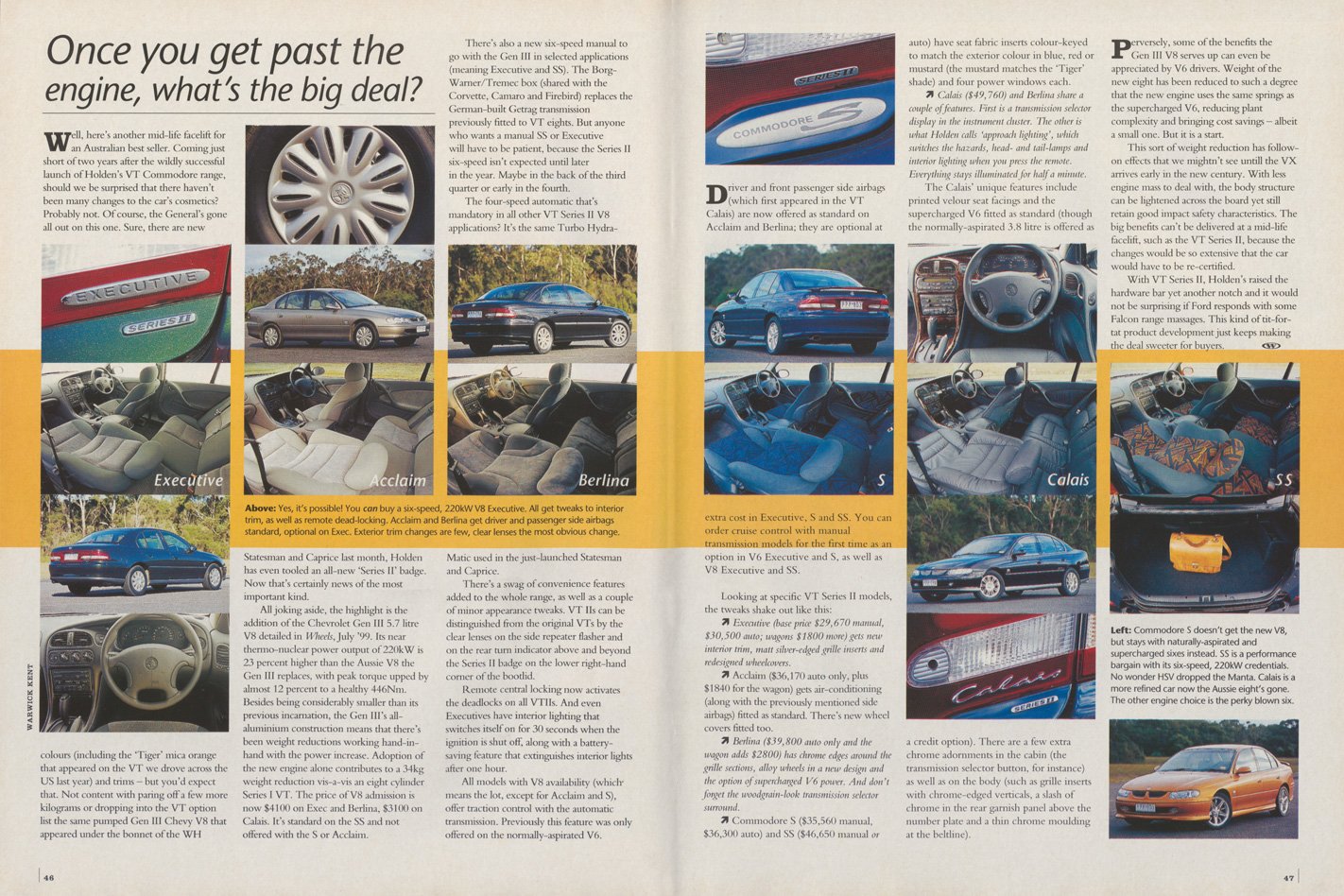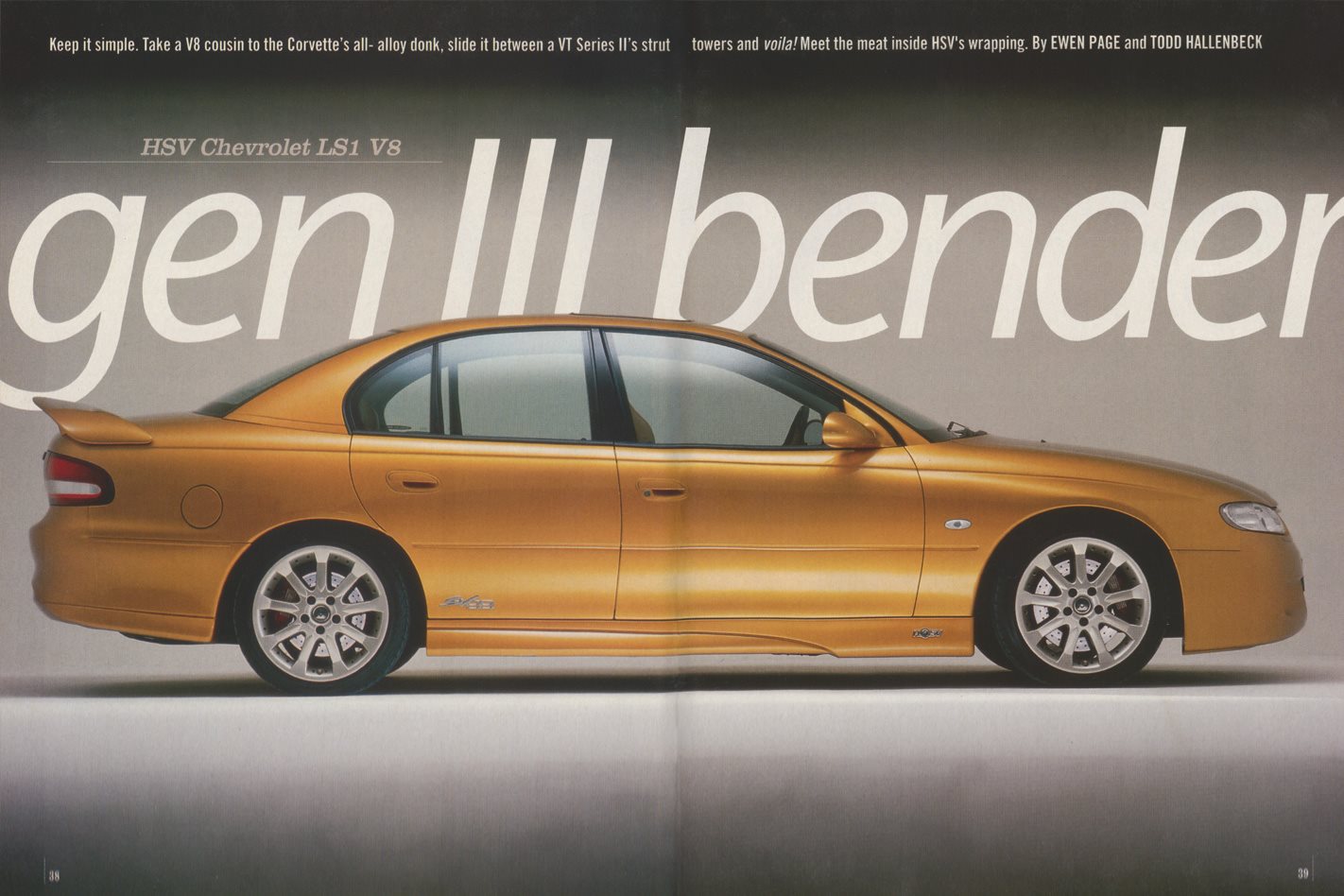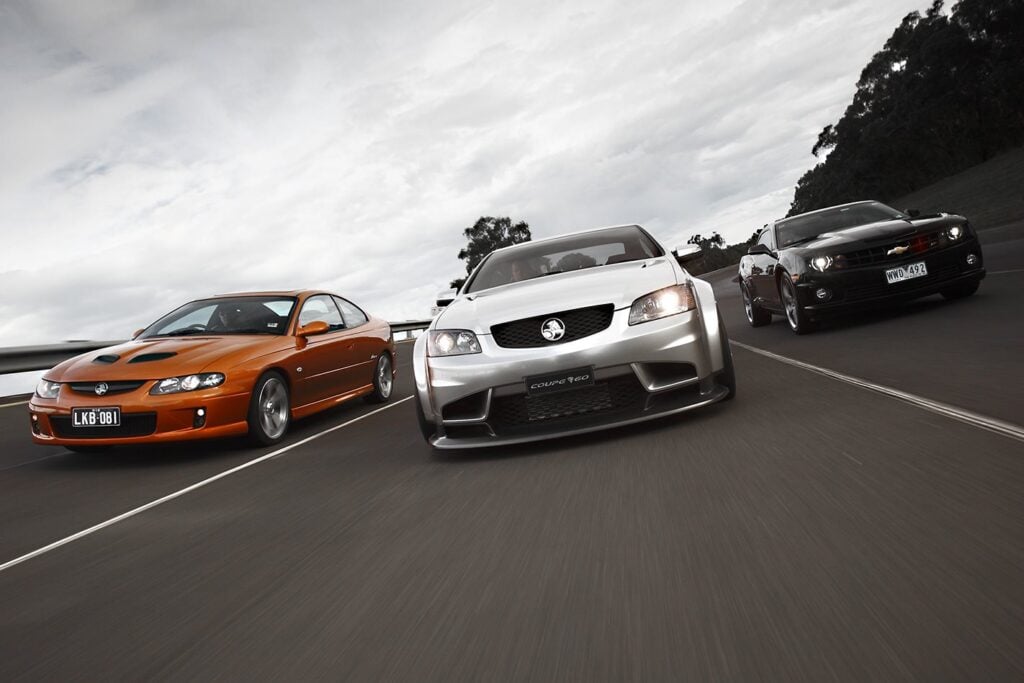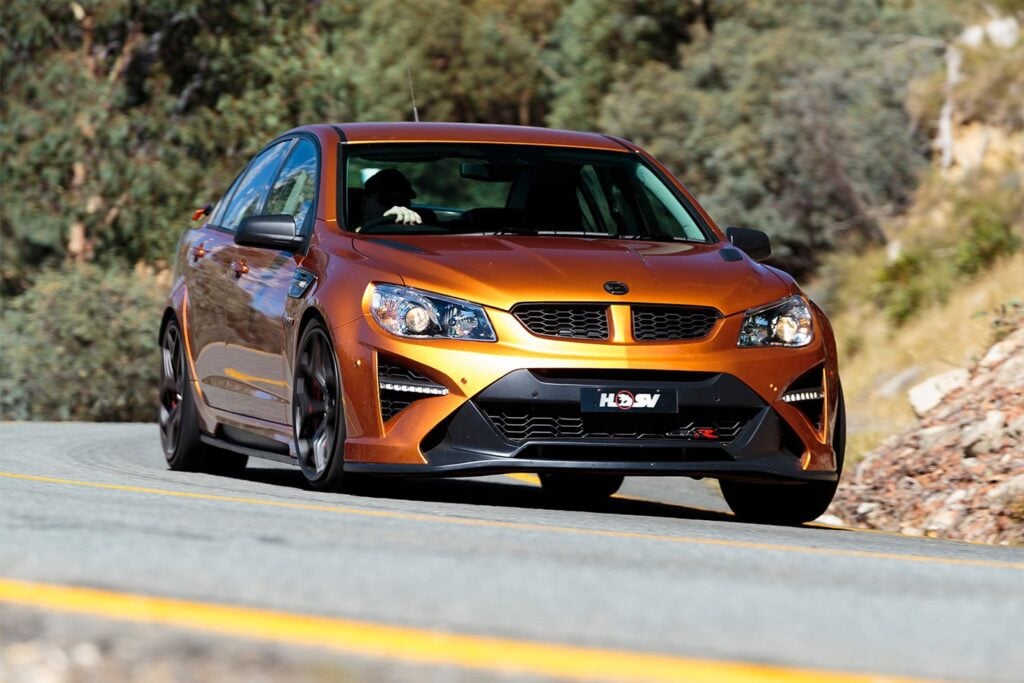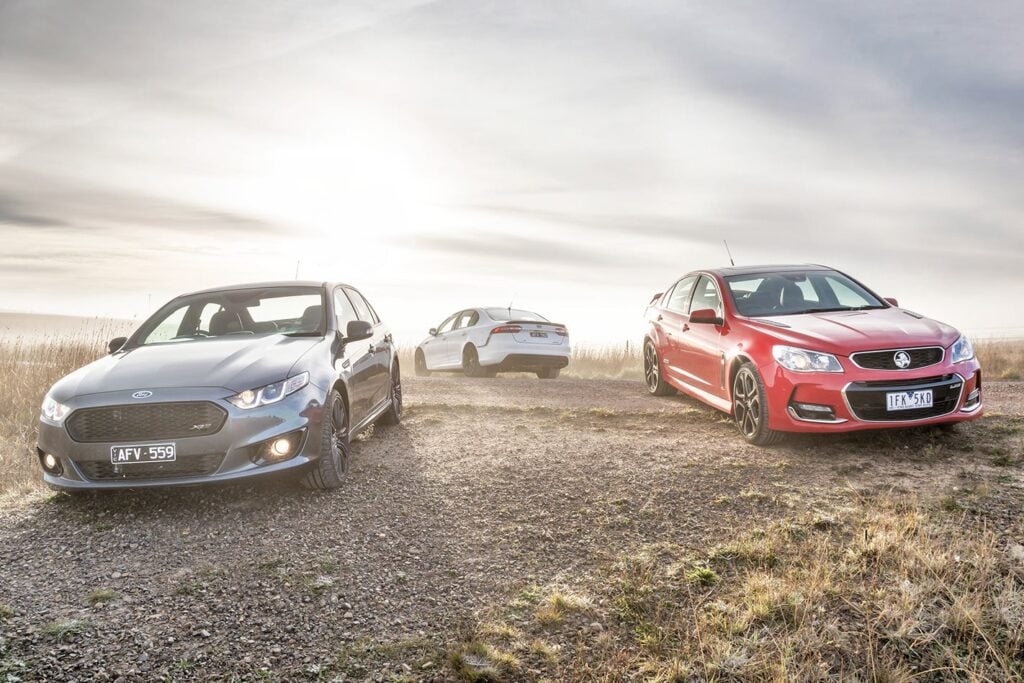It’s a seemingly simple left-into-right. A flick of the wrists, an easy-over shifting of weight from one pair of Z-rated tyres to the other, then away.
A one dimensional wiggle. But when you’re about to turn-in at something approaching 140km/h, that first left rushes up much, much faster than you expect. With the belt cinched tight, your left knee braced against the door trim and your right hand pushing down against the seat cushion, you can see past Mark Skaife‘s shoulder. From the back seat, you watch the speedo needle rise and fall, as Skaife loads then releases suspension and tyres. It never drops below 130km/h and is brushing past 160 as we run millimetre perfect to the edge of the bitumen exiting the right-hander.
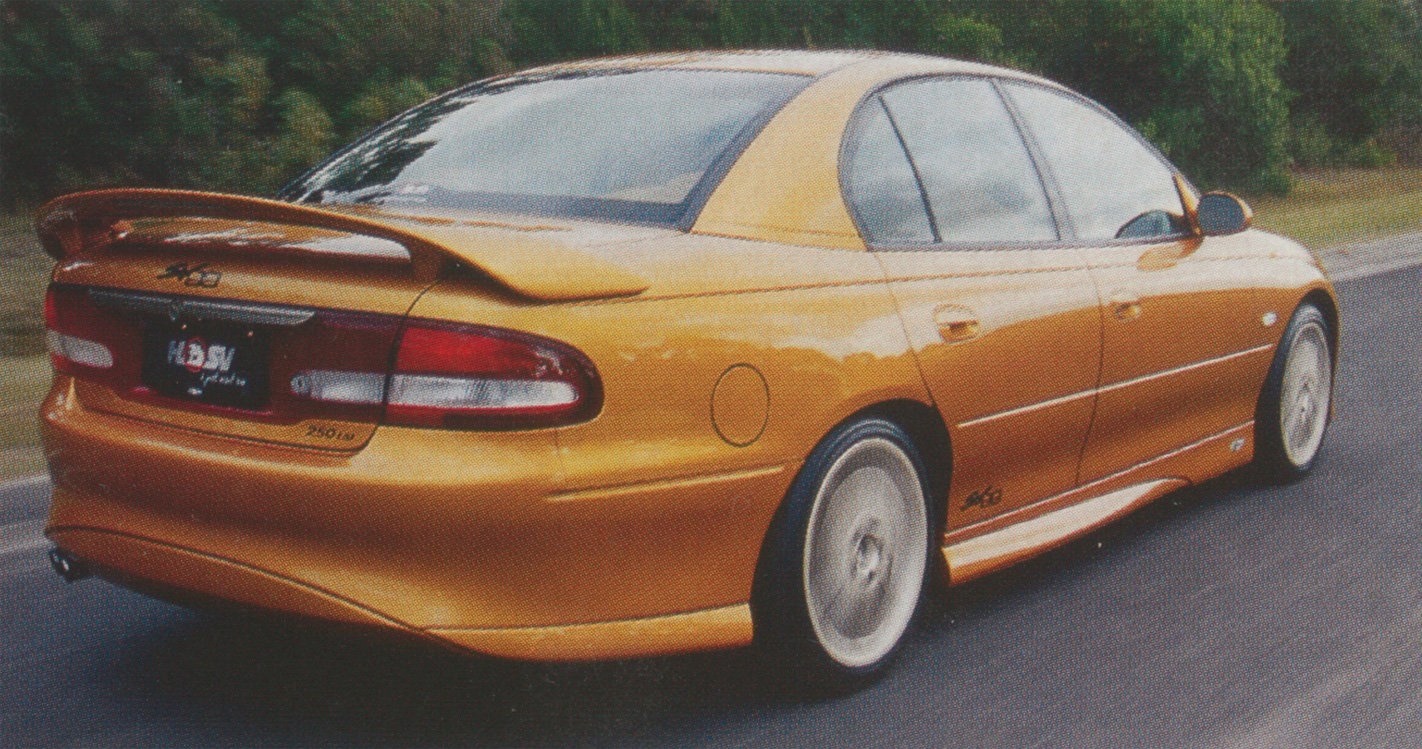
None had a Chevrolet VS beneath the bonnet. It’s just as well we had some time in an engineering prototype car some months ago …
Don’t go looking for a VT II HSV Manta – there isn’t one. Hurt by Holden’s runaway success with the better looking SS, HSV has dumped the entry level eight, leaving the supercharged XU6 ($51,990) to lead the charge. In order of price, the HSV range follows with Club Sport ($55,000), the enhanced Club Sport RS ($59,750), the SV99 pictured here ($76,450), Estate ($70,950), Senator Signature ($71,450) and the WH Grange ($7S,500). The VS Commodore-based Maloo continues, to be replaced next year when the Chev-engined VT II version comes on line. Why no GTS? HSV is offering just one engine at this point, meaning the Club Sport RS runs with the previously higher performing GTS. The famous badge will reappear in time for the Olympics with a rumoured 300kW engine.
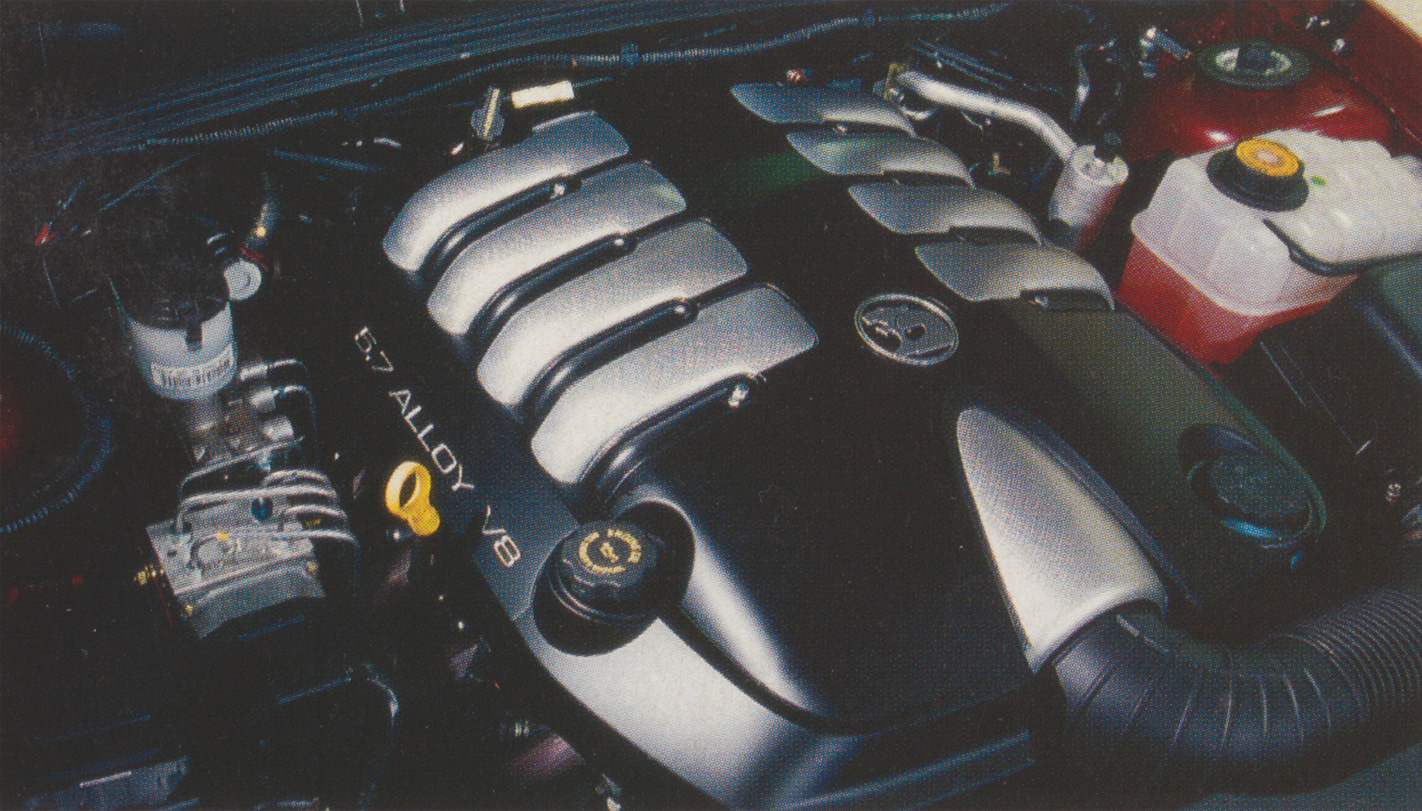
The decision to end the locally-built V8 came from Detroit long before the VT Commodore was launched, which explains why the VT engine bay is wider that the VS. The LS 1 is broader, more powerful, 30kg lighter and more fuel-efficient than HSV’s previous, Aussie small block. It also revs to 6200rpm. Still pushrod with two valves per cylinder, the all-aluminium V8 is possibly the most advanced pushrod engine in the world, although there’ll be some who say pushrod and advanced is an oxymoron.
Okay, the BMW M5’s 5.0 litre, dohc 32-valve V8 is more powerful, but it is also hand-built at a rate of just 25 per day. GM executives in Detroit reckoned the cast-iron Holden V8 was not export quality and lacked technical and spare parts support for overseas markets. Other GM engine options were the 4.6-litre Cadillac Northstar V8 and the 4.0 litre Oldsmobile Aurora – both transverse mounted and less powerful than the LS1.
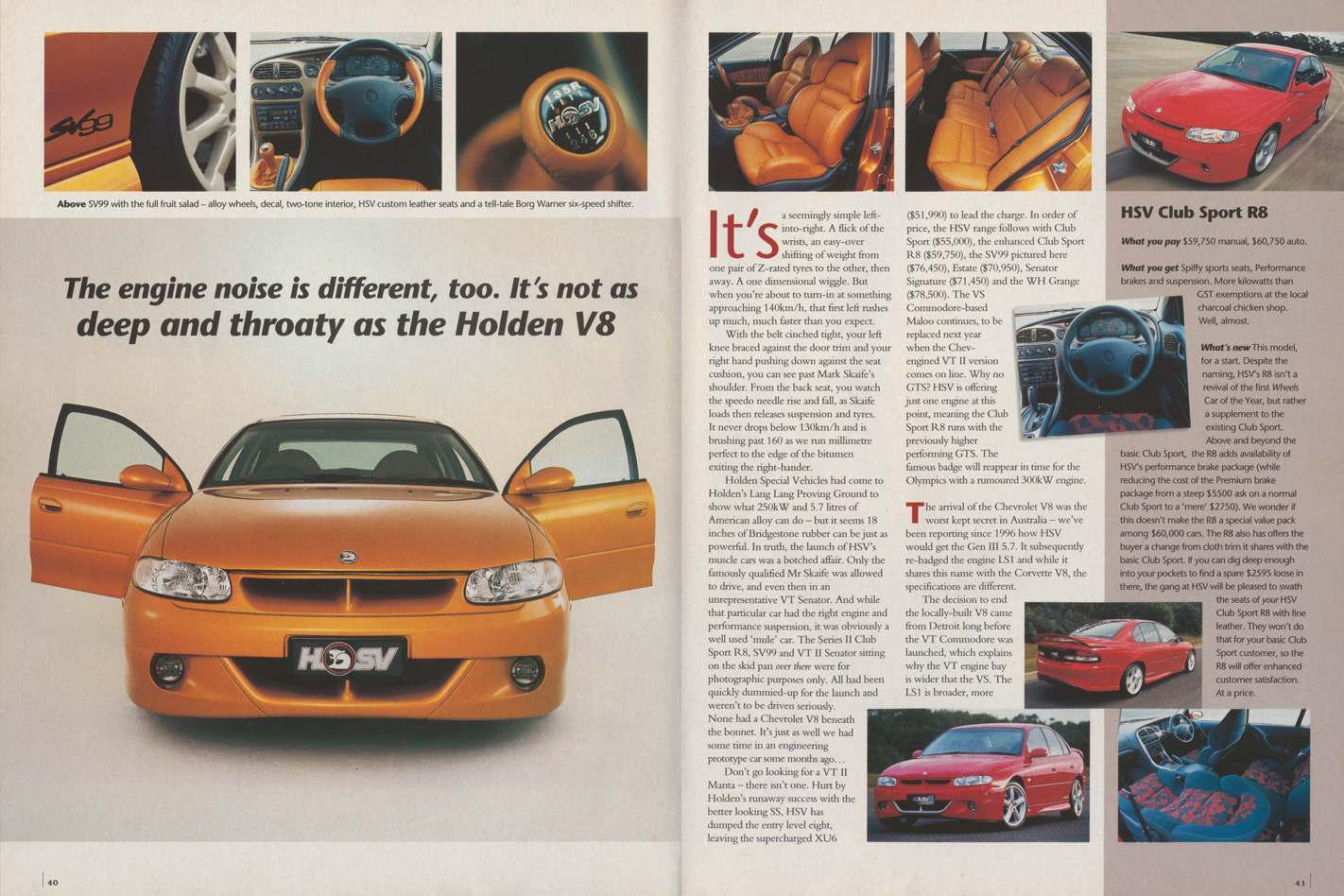
While more than 10,000 Gen IIIs will be imported into Australia each year (many for export to the Middle East in Commodores and Statesmans), HSV’s engines will be of a unique specification. Tuned to run on premium 95 RON fuel, where Holden’s Gen Ills are detuned to suit regular 91, a combination of exhaust technology and engine electronics has extracted more power and torque.
And says HSV, safe and reliable driveability. In the Corvette, Chevrolet claims 257kW at 5400rpm and 483Nm at 4200rpm. HSV reckons its LS1 V8 muscles up 250kW at 5600rpm and 470Nm at 4000rpm to push an 1800kg Club Sport from 0-100km/h in 5.7sec and 400m in 13.9sec. The Club Sport may not be the quickest sedan in the world, M5 and Mercedes-AMG’s E55 are at least two tenths quicker, but for no more than $55,000 the Club Sport claims itself to be the quickest sedan ever built in Australia.
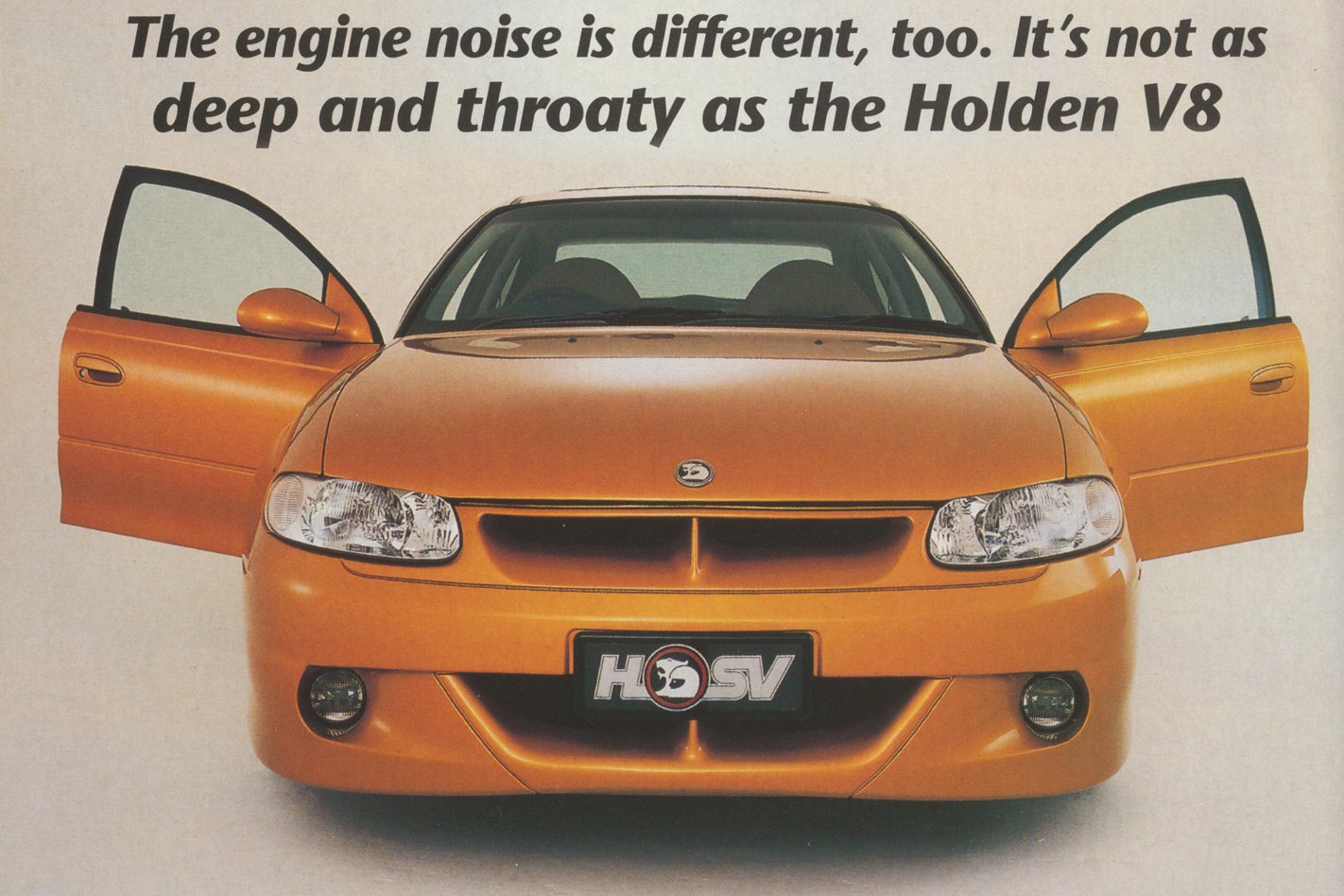
Traction control is standard on automatic and manual … and you’ll need it. Often. The engine noise is noticeably different, too. Not as deep and throaty as the Holden V8, the Chev’s exhaust note is higher, and up in the revs there’s a definite mechanical buzz that sounds damn sexy. As part of the HSV in-house modification process, the LS1’s cast iron exhaust manifolds (kept on Holden models) are tossed for a set of stainless steel HM extractors, low back pressure catalytic converters and 57mm stainless steel twin pipe exhaust system.
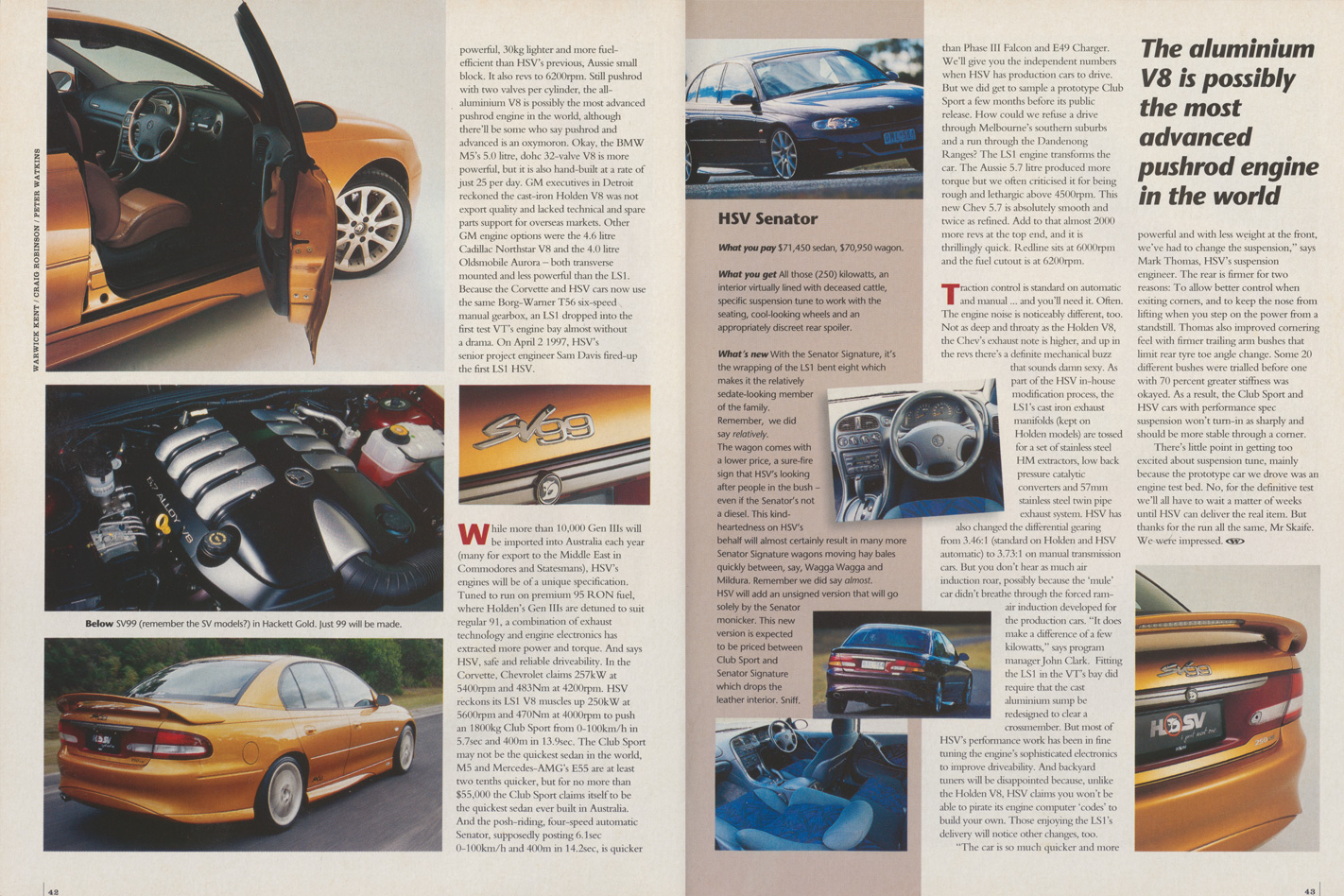
Fitting the LS 1 in the VT’s bay did require that the cast aluminium sump be redesigned to clear a cross-member. But most of HSV’s performance work has been in fine tuning the engine’s sophisticated electronics to improve driveability. And backyard tuners will be disappointed because, unlike the Holden V8, HSV claims you won’t be able to pirate its engine computer ‘codes’ to build your own. Those enjoying the LS1’s delivery will notice other changes, too.
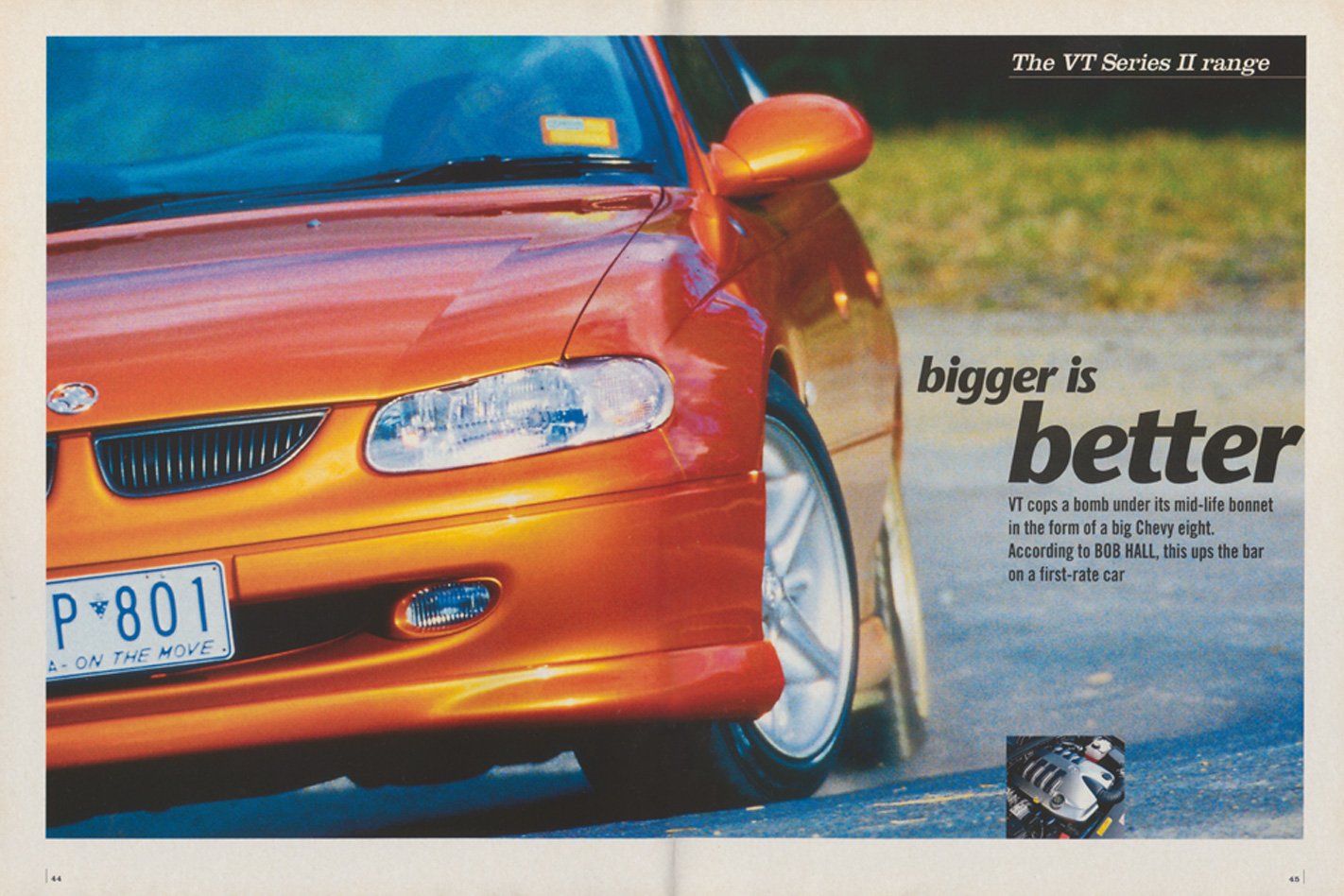
There’s little point in getting too excited about suspension tune, mainly because the prototype car we drove was an engine test bed.
No, for the definitive test we’ll all have to wait a matter of weeks until HSV can deliver the real item. But thanks for the run all the same, Mr Skaife. We were impressed.
